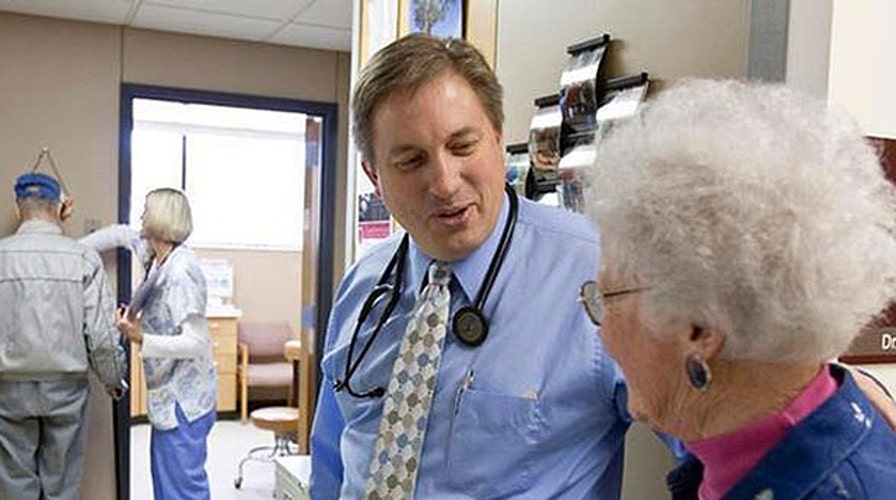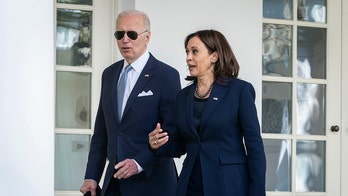While virtually all the ObamaCare focus is trained on the program's dysfunctional website, another problem could be emerging -- in states where individuals are able to sign up, far more are enrolling in Medicaid than private plans.
For now, the statistics are spotty. The Obama administration still hasn't provided figures on how many people have successfully enrolled through the federally run exchanges. Some, but not all, states have provided their own relatively up-to-date figures.
But for those that have, the lopsided numbers show Medicaid is getting the lion's share of enrollees.
In Washington state, more than 35,000 people have signed up for coverage since Oct. 1. Of them, just 4,500 went into private plans. Roughly 31,000 signed up for Medicaid -- with coverage kicking in sometime between now and Jan. 1.
The director of the state's Health Care Authority said they were "pleased by the strong response of Medicaid-eligible residents."
But the imbalance -- if it does not even out in the months to come -- could create problems for private insurance companies which are relying on a major influx of new and healthy customers to make the system hum.
"There are a lot of elements of this law that have to work, that must work -- otherwise the whole thing collapses," the Cato Institute's Michael Cannon said. "They need -- need -- lots of healthy people to sign up for insurance through the exchanges."
The fact that people are flocking to Medicaid isn't necessarily a problem -- but a lack of healthy enrollees on private plans would be.
The main reason the Affordable Care Act mandated that individuals buy insurance was so that private insurers would get enough young, healthy people in the system who could offset the costs of covering older and sicker patients. Otherwise, at the very least, costs will skyrocket for those in the system.
"You need to have a good balance of people purchasing coverage or these reforms won't work," Robert Zirkelbach, spokesman for America's Health Insurance Plans, told FoxNews.com.
Still, Zirkelbach said it's too early to gauge whether the current enrollment statistics are anything to worry about.
"This is a six-month open enrollment period, so I think it's way too early to know now how many people are going to purchase coverage through these marketplaces," he said, noting that the ongoing technical problems mean the current figures are very incomplete. "It doesn't feel like it, but we're only in week four now."
Cannon said the mix of new enrollees could certainly change if and when the website is fixed. Then the question becomes, of those signing up, are they healthy?
The health care law was built to expand coverage in two major ways: by offering people subsidies to purchase insurance on the private market, and by expanding the number of people eligible for Medicaid. The expansion of Medicaid was a source of political tension between the White House and Republican governors -- so far, half the states have agreed to expand the program which provides health coverage to low-income Americans.
To some extent, states were gearing up for a surge in Medicaid enrollment as they'd already started reaching out to potential enrollees.
Before the ObamaCare exchanges even launched, for instance, Maryland had signed up more than 80,000 people for automatic enrollment in Medicaid starting Jan. 1, 2014.
The enrollment since Oct. 1, though, has also only brought in 2,300 additional participants - as of an Oct. 18 update.
In Washington state, Health Care Authority spokesman Jim Stevenson told FoxNews.com that officials expected the early participants to gravitate toward Medicaid, in part because it requires no money down and because those seeking private coverage may tend to wait until the latter part of the enrollment period to buy insurance.
"I think we'll start to make progress in both categories," he said.
In other states, Medicaid is also by far the more popular choice of those enrolling this month.
The Democrat and Chronicle newspaper reports that in New York, nearly 24,000 of the 37,000 newly enrolled residents are going into Medicaid, which millions of New Yorkers are already on. Just 13,313 chose private plans.
The Congressional Budget Office estimated this past May that, at the outset, more than half of those enrolling would be on Medicaid but that, over the next decade, the balance will shift and millions more will join private plans through the exchanges.
"Time will tell," Zirkelbach said.





